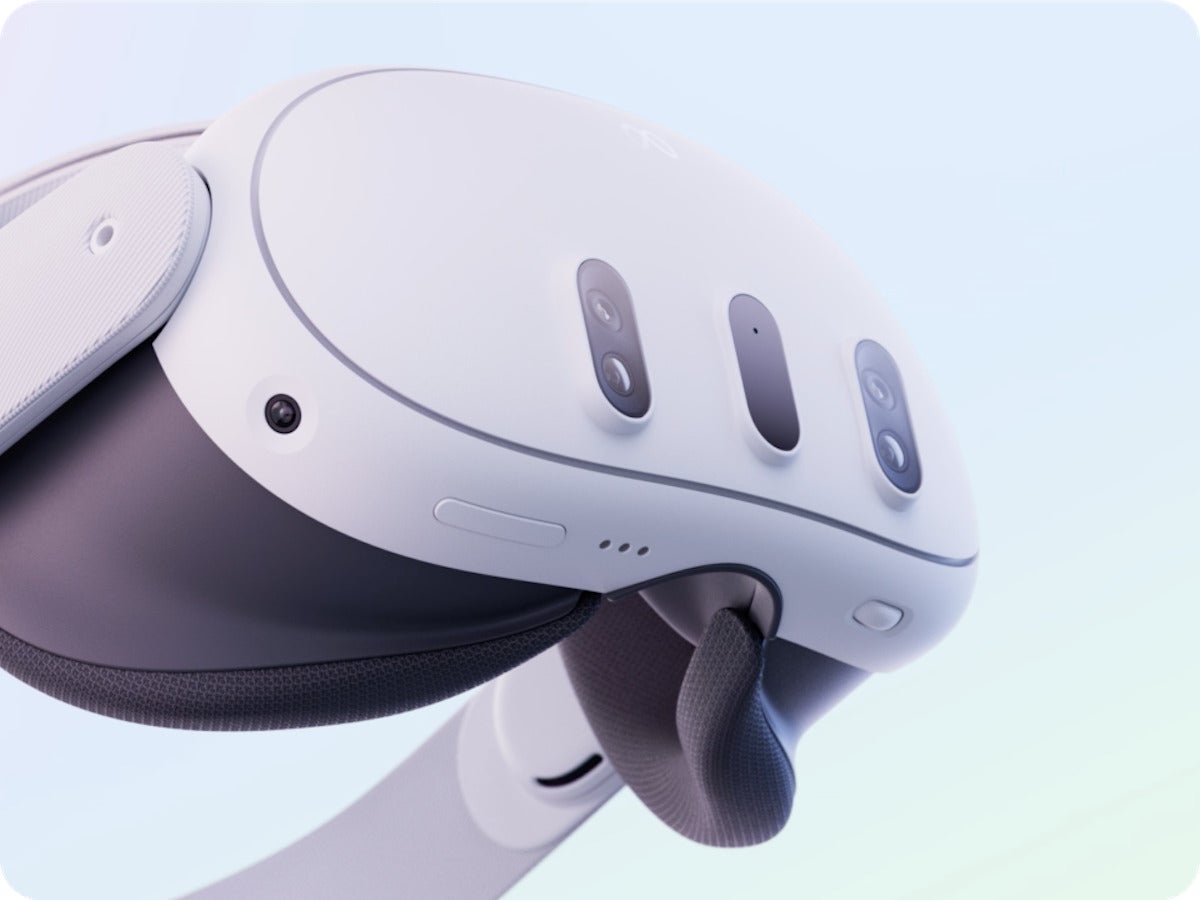Meta focused on bringing mixed reality to the masses at its Connect developer conference this week, rolling out its Meta Quest 3 headset with an emphasis on entertainment and gaming. But the company sees potential uses in the workplace, too. In particular, the Quest 3 headset’s “pass-through” feature is designed to blend physical and digital environments.
“Meta Quest 3 will unlock new possibilities and let businesses reimagine the world at work with a combination of mixed reality capabilities, powerful specs, and enhanced ergonomics,” Jamie Keane, Meta’s director of product management, said during a presentation at the Meta Connect event Wednesday.
Workplace training has generally been the primary use for virtual reality headsets in the workplace to date, and while that’s likely to be the same for the Quest 3, the ability to view the outside world while wearing the headset could open up other applications.
“Enterprise adoption for the Quest 3 is certainly expected to grow and be one of the drivers for Quest 3 shipments throughout its lifetime,” said Jitesh Ubrani, a research manager at IDC. “With the Quest 3’s ability to bring mixed-reality experiences, businesses can use the headset in situations where having pass-through capabilities are needed for safety or functionality.”
For example, Quest 3’s hand-tracking capabilities make it useful in scenarios where employees need to be hands-free or are required to have tools, such as when providing remote assistance. “Engineers or mechanics could use the headset while working on an engine through the use of a see-what-I-see solution,” said Ubrani.
The use cases likely to be most important for enterprise users include learning, training, 3D design and visualization, and — to an extent — meetings and collaboration.
Quest 3 pricing and use cases
The Quest 3, available for pre-order now and on sale Oct. 10, offers several improvements over the Quest 2 and even its pricier Quest Pro headset. It gets a performance boost, for instance, over the Quest 2 with Qualcomm’s Snapdragon XR2 Gen 2 chip. Meta CEO Mark Zuckerberg described the device as the “most powerful headset” the company has shipped to date.
The device starts at $499 for a headset with 128GB of storage; a more expensive version with 512GB of storage, sells for $649.
Meta said the new headset will be easier to use and wear. Than its predecessors While not exactly slim, it is noticeably less hefty than either the Quest 2 or Quest Pro, thanks to “next gen” pancake lenses and new displays, according to Meta. Battery life, however, hasn’t improved much; it remains around two hours.
The color “pass-through” feature is perhaps the key addition for the Quest 3; it uses two external cameras to provide a video feed of a user’s surroundings. As with Apple’s Vision Pro, this enables digital objects to be overlaid on top of the physical world — a form of augmented reality….
2023-10-01 08:48:02
Source from www.computerworld.com rnrn



















